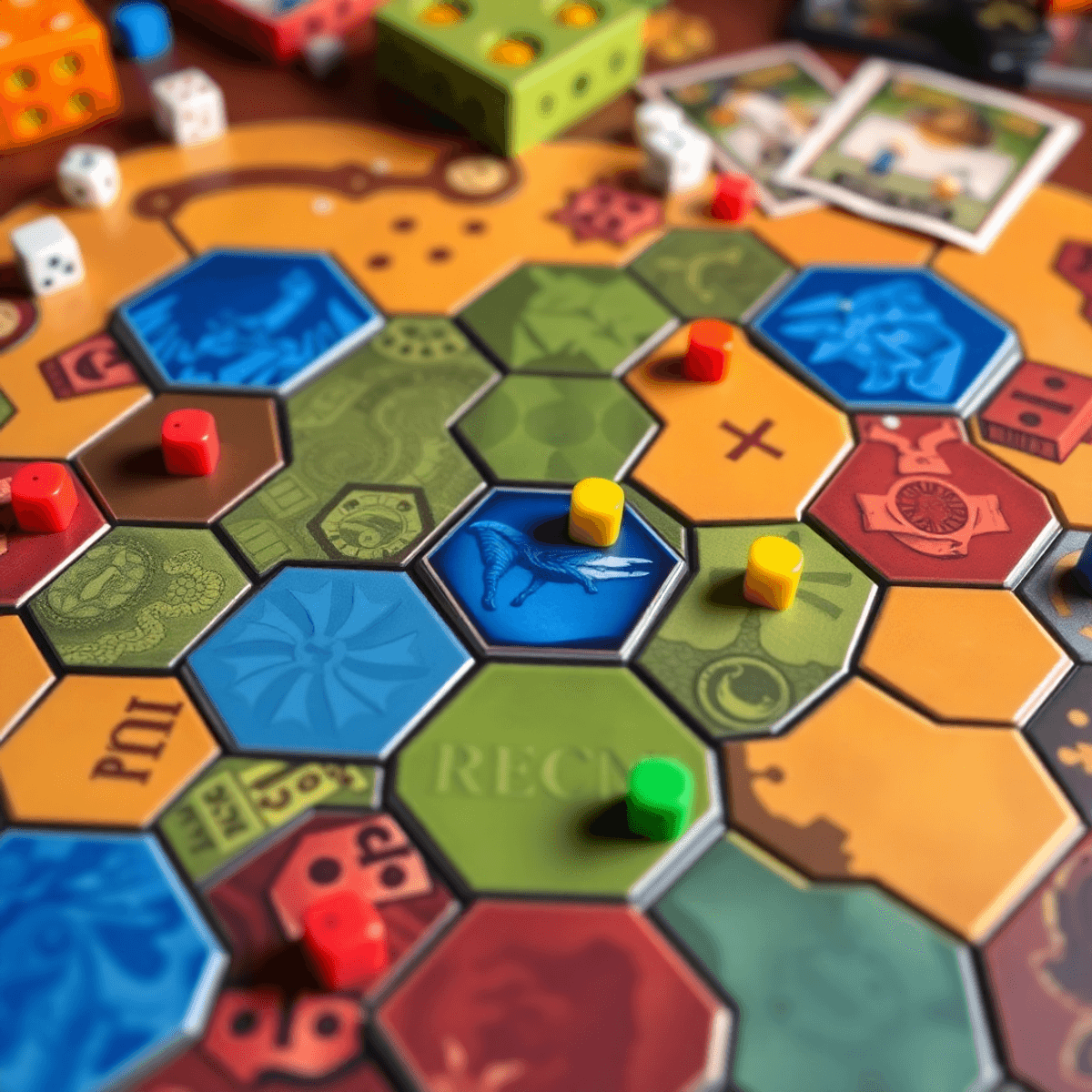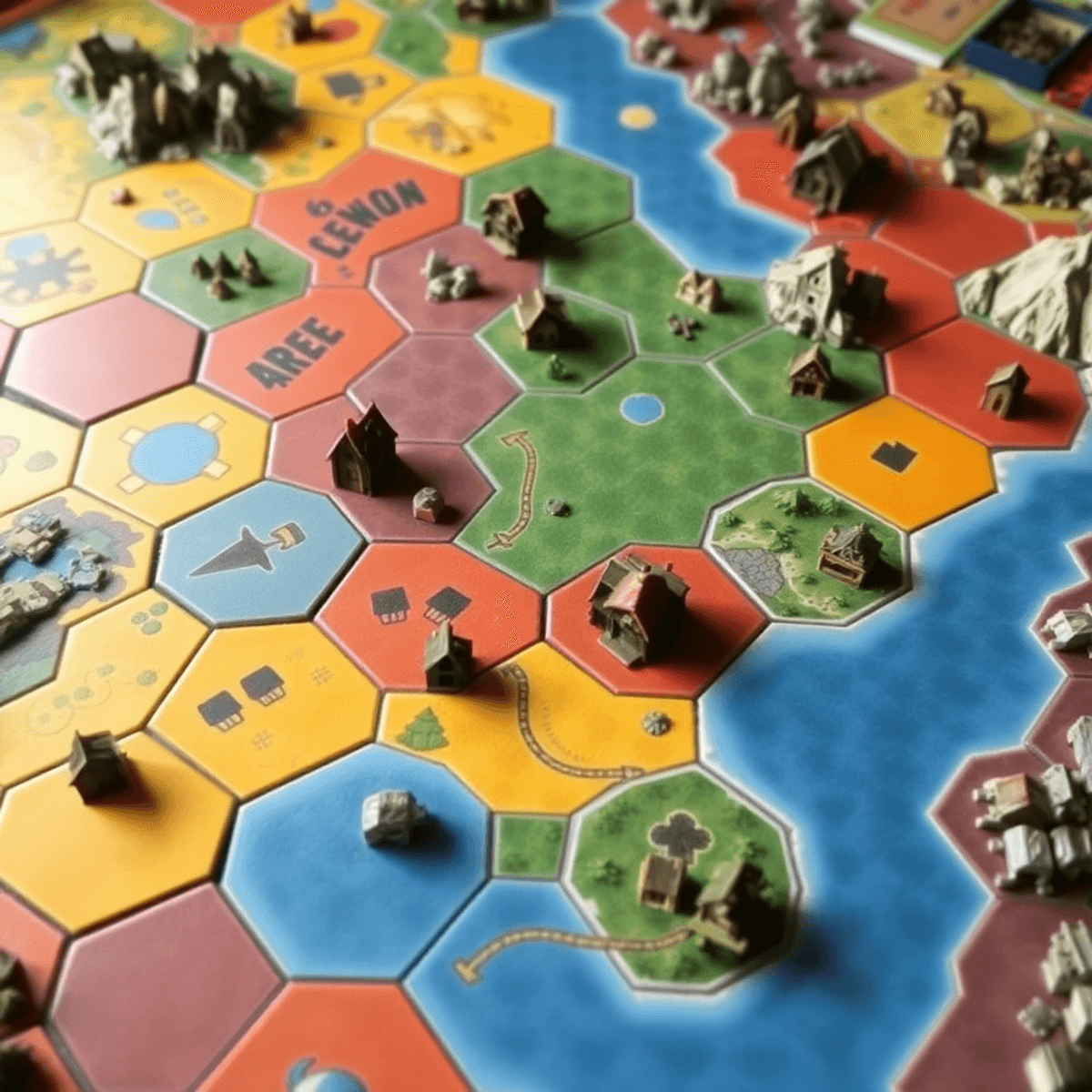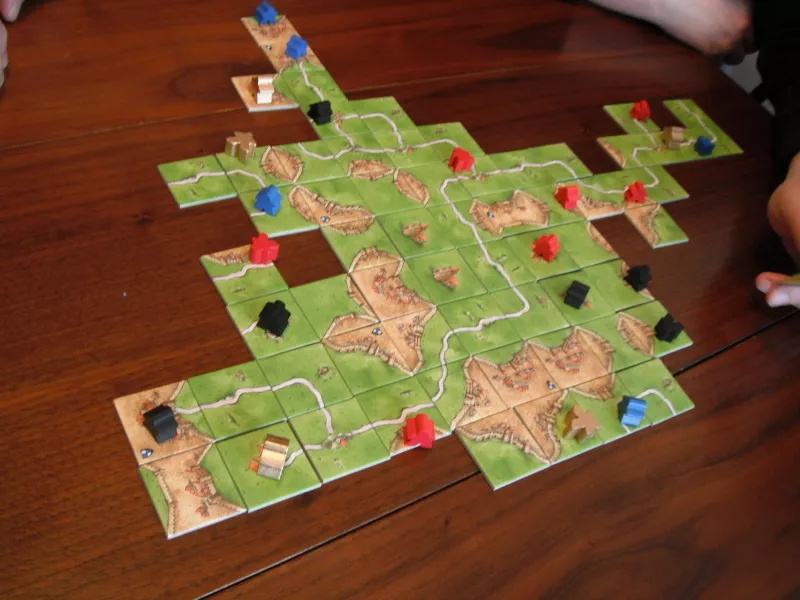
The release of Catan in 1995 marked a revolutionary shift in modular board game design. Created by Klaus Teuber, this groundbreaking title challenged the traditional notion of static board layouts that had dominated gaming for centuries. The game’s innovative approach transformed casual family entertainment into a dynamic, strategic experience.
Catan’s Innovative Design
Unlike classic games like Monopoly or Risk with their fixed paths and predetermined spaces, Catan introduced a modular board system using hexagonal tiles. This design allows players to create different island configurations for each game session, resulting in:
- Unique resource distributions
- Variable strategic opportunities
- Fresh challenges with every playthrough
Catan’s Lasting Impact
The impact of Catan’s design extends beyond its immediate success. The game has sold over 30 million copies worldwide, establishing itself as a cornerstone of modern board gaming. Its influence sparked what many enthusiasts call the “German-style board game revolution,” characterized by:
- Emphasis on strategy over luck
- Player interaction and negotiation
- Reduced player elimination
- Elegant mechanics with meaningful choices
This pioneering design philosophy has inspired countless designers and publishers, leading to an explosion of innovative modular board games in the decades following Catan release. The game’s success demonstrated that players craved more sophisticated gaming experiences, paving the way for the current golden age of tabletop gaming.
Understanding Modular Boards in Game Design
Modular boards are a game-changer in tabletop gaming design. They feature interchangeable pieces that create diverse gameplay environments. Unlike traditional static boards with fixed paths and positions, modular designs allow players to build unique layouts for each session, creating dynamic playing fields that require different strategies.
Purposes of Modular Boards in Game Design
The use of modular boards serves several purposes in game design:
- Enhanced Replayability: Each game setup presents distinct challenges and opportunities, preventing the development of dominant strategies that can make static board games feel repetitive.
- Strategic Adaptation: Players must reassess their approach based on the current board configuration, fostering critical thinking and tactical flexibility.
- Player Agency: The ability to influence or create the game environment gives players additional control over their gaming experience.
- Scalable Difficulty: Modular board games can accommodate different skill levels by adjusting the complexity of layouts.
Emergent Gameplay Experiences through Modular Elements
Game designers use modular elements to create emergent gameplay experiences. The unpredictable nature of these boards forces players to engage with the game space in new ways, developing fresh strategies for each session. This design philosophy has transformed how players interact with game mechanics, turning passive board spaces into active elements that shape gameplay decisions.
Balancing Randomization with Strategic Depth
The success of modular board design lies in its ability to balance randomization with strategic depth. When done well, these systems create engaging experiences that remain appealing through multiple playthroughs while challenging players to master adaptable strategies instead of memorized patterns.

Catan’s Key Features That Set It Apart
Catan’s distinctive hexagonal tile system creates a dynamic landscape that shapes every aspect of gameplay. The interlocking hexes form natural boundaries and pathways, influencing player movement and settlement placement strategies. Each hex represents a specific resource – brick, lumber, ore, grain, or wool – establishing clear visual connections between territories and their economic value.
Resource Management Mechanics
The game’s resource management mechanics brilliantly complement its modular design. Players must carefully consider their starting positions, as the placement of settlements determines access to different resources throughout the game. The probability-based dice system adds another layer of strategy, forcing players to balance risk and reward when choosing settlement locations.
Player Interaction
Player interaction stands as a cornerstone of Catan’s design. The limited resource distribution creates natural scarcity, driving players to engage in meaningful negotiations. This trading system transforms what could be a solitary resource-gathering exercise into a vibrant social experience. Players must:
- Negotiate resource trades
- Form temporary alliances
- Block opponents’ expansion attempts
- Compete for the longest road and largest army cards
The robber mechanic adds an element of direct conflict, allowing players to disrupt their opponents’ resource production while maintaining the game’s friendly competitive nature. This combination of [strategic depth and social interaction](https://www.thegamer.com/settlers-of-catan-strategy-guide-tips/) creates an engaging experience that remains fresh despite countless replays.
The Lasting Influence of Catan on Modern Modular Board Games
Catan’s groundbreaking modular board design brought about a major change in the board gaming industry, motivating many designers to rethink conventional gameplay structures. This influence can be seen in various games that followed Catan’s lead:
- Heroscape: Embraced modularity through its interlocking terrain pieces, creating three-dimensional battlefields that players could customize for each session.
- Oracle of Delphi: Adopted hexagonal tiles similar to Catan, while adding unique movement mechanics and quest-based objectives.
A Shift in Game Development Philosophy
The success of these modular designs led to a significant shift in game development philosophy. Designers recognized that customizable environments could enhance:
- Player agency through meaningful setup decisions
- Strategic depth via variable board configurations
- Social interaction as players adapt to changing landscapes
- Replayability through randomized elements
Building Upon Catan’s Foundation
Modern titles like Twilight Imperium and 7 Wonders have built upon Catan’s foundation, incorporating modular elements while adding their own innovative mechanics. The impact extends beyond traditional board games, influencing digital adaptations and hybrid games that combine physical components with app-based features.
A New Standard in Gaming Design
This design revolution has created a new standard in gaming where static boards are often seen as limiting. Contemporary designers now approach board creation with modularity in mind, seeking ways to give players control over their gaming environment while maintaining balanced gameplay mechanics.
Catan: An Accessible Game for New Players
Catan’s genius lies in its ability to welcome newcomers while keeping experienced players engaged. The game’s simple mechanics make it easy for players to understand the basic concepts within minutes:
- Resource Collection: Players gain resources based on dice rolls
- Building Actions: Players have clear costs and requirements for building settlements and roads
- Trading System: Players interact naturally by exchanging resources
Removing Barriers for New Players
The game’s design eliminates common obstacles that often discourage new players:
- No player elimination: Everyone stays in the game until the end
- Minimal downtime between turns: Players are always involved and engaged
- Modular board setup: Even first-time players have equal chances of winning
Bridging the Gap Between Game Types
Catan serves as a perfect bridge between traditional family games and more complex hobby titles. Its combination of luck and strategy creates memorable moments without overwhelming new players with excessive rules.
The game introduces important concepts found in modern board gaming:
- Resource management
- Long-term planning
- Player negotiation
- Spatial awareness
Catan as a Gateway Game
This accessibility has made Catan a gateway game for many players entering the hobby. Many gaming groups use it as their introduction to modern board gaming, leading players to explore more complex titles.
The game’s success in this role has inspired designers to prioritize approachability in their own creations, fostering a more inclusive gaming community.
The Future of Modular Gaming Beyond Catan
Catan legacy continues to influence modern game design, inspiring a new generation of innovative modular board games. Recent releases like Oath: Chronicles of Empire and Exile showcase advanced modularity with ever-changing landscapes and narratives. Digital adaptations have expanded these concepts into virtual spaces, blending physical and digital gaming experiences.

Game designers now push boundaries with:
- Dynamic Environment Systems – Boards that transform during gameplay
- 3D Modular Elements – Incorporating vertical space and structural components
- AI-Enhanced Modularity – Digital versions with procedurally generated layouts
The future of modular gaming points toward increased customization and player agency. Games like Gloomhaven and 7th Continent demonstrate how Catan’s foundational concepts can evolve into rich, narrative-driven experiences. These innovations suggest that modular board design will remain central to game development, fostering creativity and engagement in ways Klaus Teuber might never have imagined when he first created Catan’s revolutionary hexagonal board.
If you want to learn more about history and evolution of tile placement and modular design mechanics check our in depth guide – Crafting the Board: The Evolution of Tile Placement & Modular Game Design.




